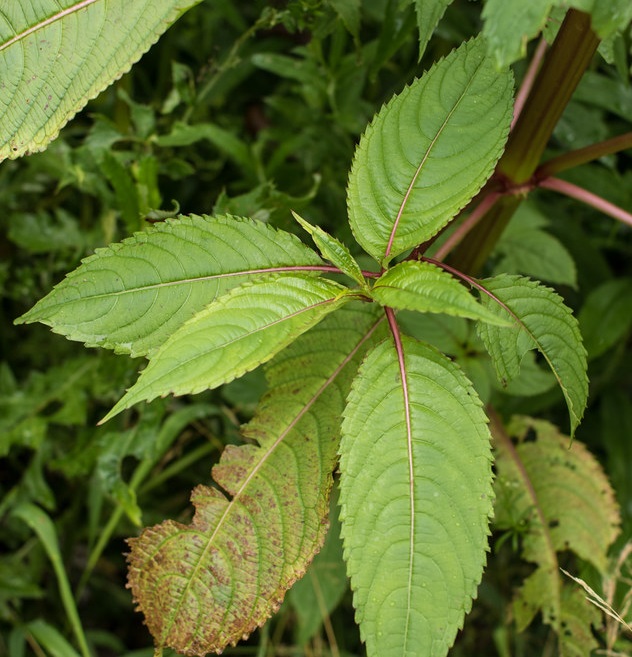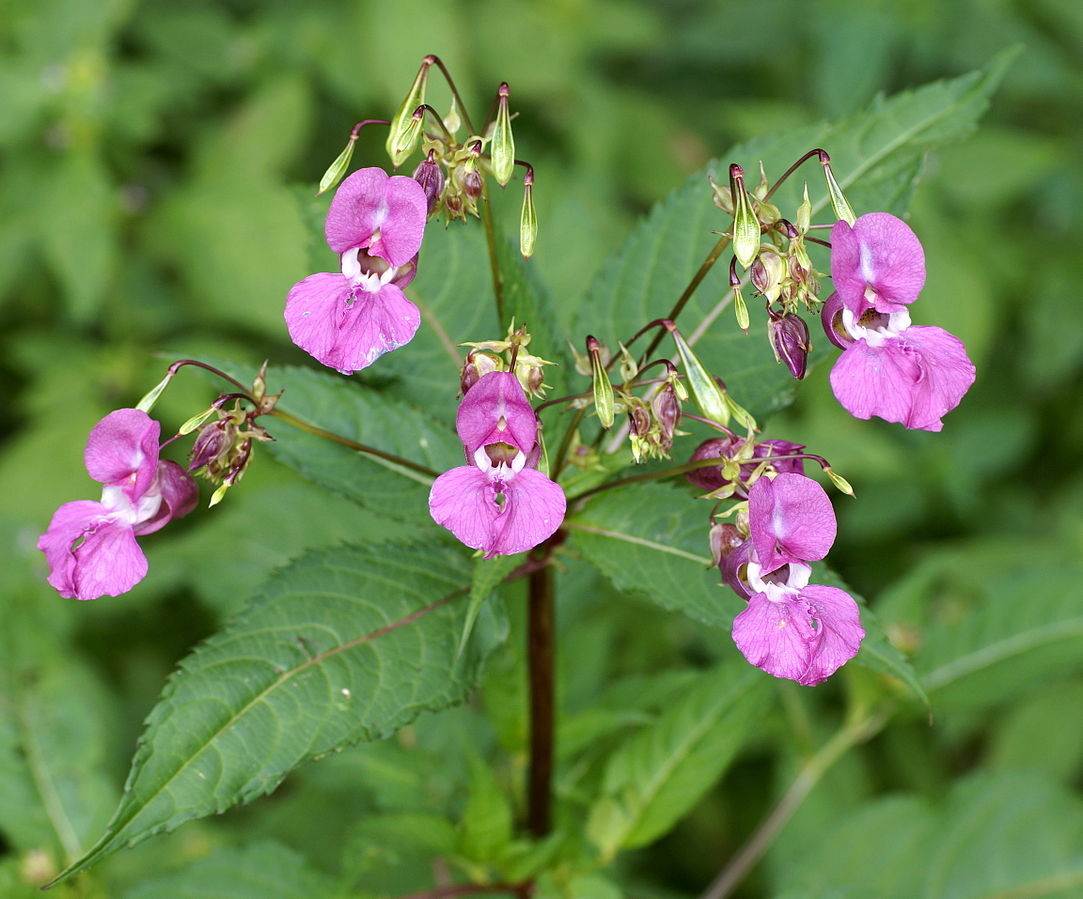Himalayan Balsam

Himalayan Balsam
(Impatiens glandulifera)
Priority: - Established / Strategic Control
Tags: Terrestrial
Identification and Reproduction
Identification:
- Himalayan balsam plants are large annual plants that can reach up to 3 m in height with purple to slight reddish stems.
- Leaves grow in whorls and are oblong to lance-like with serrated edges. They can extend to 20 cm long. They have a distinct red mid-vein.
- Himalayan balam are also known as "Policeman's helmet" which is named after their helmet shaped flowers. They can range from white, pink and purple. Flowers bloom between June through November.
- Seedpods are green and will contain up to 16 seeds each. When disturbed by touch, seeds will be expelled and can be dispersed up to 7 meters.
Reproduction:
- This annual plant has a high seed production rate and requires bare soil for seedling establishment, thus disturbed areas by human activities are likely to be invaded.
- Approximately 32,000 seeds per square metre is dispersed in a dense infestation.
- Seeds have a 80% germination rate.
- Seeds are easily dispersed by humans, animals and since they are buoyant they can also travel by water.
Habitat & Ecology
- They prefer damp and shaded environmental conditions.
- Tends to form dense monocultures on moist sites.
- They are found in riparian areas, creek edges ditches, and disturbed areas.
Impacts
Ecological:
- They are highly competitive for moisture and light condition.
- They also attract pollinators away from native flowers.
- Overall they damage the ecosystem and ultimately disturb native species diversity.
- Since they have shallow roots and die during winter they promote erosion.
Management
Mechanical/Manual Control:
- Techniques should be applied prior to seed capsule maturity. If the seed pods have formed it is recommended to wait until the following season. Seeds tend to mature by mid-July.
- Because of their poor root system, they can be easily pulled out. However pull during May through June, before any flowers or seedpods are present to prevent further distribution, typically
- Cutting the tops of the plant will prevent seed formation.
- For large infestations mowing or brush cutting to the base can be effective.
- Tarp or mulch site after removal to prevent regrowth.
- Do not compost; dispose the plant properly at the landfill.
For alternative planting options to Himalayan balsam, check out the ISCBC's Grow Me Instead guide.
Resources
Download the Invasive Species Council of BC’s Factsheet for Himalayan Balsam here.
Download the Metro Vancouver Factsheet on Himalayan Balsam here.
Download the Metro Vancouver's Best Management Practices for Himalayan Balsam here (pg. 12-20)
Header photo (Leonhard Lenz).
Photo Gallery





×









